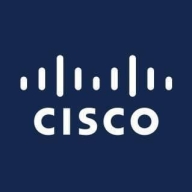

Trend Micro Deep Security and Cisco Secure Workload compete as security solutions, with Cisco Secure Workload showing an advantage due to its extensive features.
Features: Trend Micro Deep Security offers comprehensive threat protection, virtual patching, and integrity monitoring. Cisco Secure Workload provides micro-segmentation, detailed security analytics, and workload protection across multi-cloud environments.
Room for Improvement: Trend Micro Deep Security could enhance its user interface, reporting features, and response times. Cisco Secure Workload may improve its deployment complexity, integration with other platforms, and user documentation.
Ease of Deployment and Customer Service: Trend Micro Deep Security is known for its straightforward deployment and flexible integration, complemented by reliable customer service. Cisco Secure Workload, despite a more complex deployment, benefits from responsive customer support.
Pricing and ROI: Trend Micro Deep Security offers competitive pricing that ensures immediate cost-effectiveness but might result in a lower long-term ROI. Cisco Secure Workload, although having higher initial costs, is anticipated to provide significant long-term ROI due to its advanced features.
| Product | Market Share (%) |
|---|---|
| Trend Micro Deep Security | 6.9% |
| Cisco Secure Workload | 11.5% |
| Other | 81.6% |


| Company Size | Count |
|---|---|
| Small Business | 5 |
| Midsize Enterprise | 3 |
| Large Enterprise | 8 |
| Company Size | Count |
|---|---|
| Small Business | 36 |
| Midsize Enterprise | 24 |
| Large Enterprise | 46 |
Cisco Secure Workload is a cloud and data security solution that offers a zero-trust policy of keeping an organization’s application workloads safe and secure throughout the entire on-premise and cloud data center ecosystems.
Cisco Secure Workload will consistently provide protection by discovering workload process anomalies, stopping threats immediately, minimizing the risk threat surface, and aborting any lateral movement.
Today’s ecosystems are very elastic, and in the application-focused dynamic of today’s aggressive marketplace, Cisco Secure Workload delivers a robust security solution that works effectively with today’s most popular applications. The solution uniquely surrounds each and every workload to ensure organizations are able to keep their data, network, and applications safe and secure at all times. Cisco Secure Workload ensures that enterprise organizations can maintain secure applications by consistently building firewalls around every workload level throughout the entire ecosystem. The solution can manage applications that are deployed on containers, virtual machines, or bare-metal servers.
Cisco Secure workload is able to meet an organization's busy needs and offers flexible options such as Software-as-a-Service (SaaS) and on-premises options. Using the Secure Workload SaaS options, users receive all the benefits of Cisco Secure Workload protection without the hassle of having to deploy and maintain the platform on premises. Users are responsible for acquiring the necessary software licensing and deploying software agents. Using SaaS, Secure Workload runs in the cloud and is operated and maintained by Cisco. This option offers the ability to scale easily and is a popular choice for SaaS-first and SaaS-only clients. Many organizations find they get the best TCO and achieve the best productivity and profitability using the SaaS options.
When choosing on-premises options, organizations choose between hardware-based appliance models (large or small form factors). Platform selection is dependent on scalability goals, the desired fidelity level of flow telemetry, and the actual number of workloads. When a user chooses to configure Cisco Secure Workload for a conversation-only flow telemetry for all workloads, each platform has the capability to scale up vertically twice the default platform scale. Additionally, with Secure Workload, it is possible for the platform to be scaled horizontally in order to satisfy the demands of extra large widely distributed enterprise environments using federation capabilities.
Cisco Secure Workload also provides a robust disaster recovery (DR) tool, which helps to make it a complete, comprehensive solution. The DR allows for continuous restore and backup capabilities that enable users to quickly remediate operations and data to a standby cluster in the event of a drastic failure or disaster.
Reviews from Real Users
“The solution offers 100% telemetry coverage. The telemetry you collect is not sampled, it's not intermittent. It's complete. You see everything in it, including full visibility of all activities on your endpoints and in your network. Other valuable features include vast support for annotations, flexible user applications, machine learning, automatic classification, and hierarchical policies.” - CTO at a tech vendor
Trend Micro Deep Security is a comprehensive solution for endpoint security and server protection, which prevents ransomware attacks and unauthorized access attempts. Its valuable features include tracing back attacks, antivirus protection, endpoint detection and response, firewall-based solution, threat detection, predictive machine learning and AI monitoring, VPM, virtualization, and sandboxing.
The solution is easy to use, scalable, stable, and reliable, with good technical support. It has helped organizations perform well against malware and vulnerabilities, provide patching from the Protection Cloud, and improve their security posture.
Trend Micro Deep Security Features
Trend Micro Deep Security has many valuable key features. Some of the most useful ones include:
Reviews from Real Users
Trend Micro Deep Security stands out among its competitors for a number of reasons. Two major ones are its robust data and loss prevention feature and its patch management, which saves users money. PeerSpot users take note of the advantages of these features in their reviews:
One PeerSpot reviewer, a Senior Security Advisor at a healthcare company, writes, “DLP, Data Loss Prevention, and the complexity of how we manage the console and how this client, or this tool, will notify us when there is something going wrong within the server and endpoint, is good.”
Nadeem S., CEO at Haniya Technologies, notes of the solution, “Patch management is most valuable. The major selling point of Deep Security is that it is based on the cloud. Deep Security is for the servers and databases of data centers, and generally, for patch management, you have to shut down the machines, and then you have to restart them. So, they need shutdown time, which is a cost.”
We monitor all Cloud and Data Center Security reviews to prevent fraudulent reviews and keep review quality high. We do not post reviews by company employees or direct competitors. We validate each review for authenticity via cross-reference with LinkedIn, and personal follow-up with the reviewer when necessary.